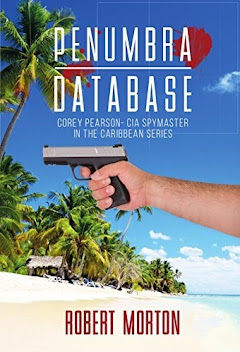 |
| Tracking a Ghost: How the CIA Took Down Mugniyeh |
For
more than twenty years, Imad Mugniyeh was the guy no one could touch—not the
CIA, not Mossad, not anyone. He slipped through cracks like water in a busted
pipe. The Agency had fat files on him, stuffed with grainy photos and
half-burned intel from guys who usually didn’t live long after talking.
Mugniyeh wasn’t just some terrorist—he was Hezbollah’s ghost. Smart. Vicious.
Untouchable.
He pulled the strings on the 1983 bombing
of the U.S. Embassy in Beirut—sixty-three dead. Then he went bigger—the Marine
barracks bombing, two hundred forty-one American servicemen lost in a blink.
After that, his name was poison. A whisper in backrooms. A curse in war rooms.
Everyone wanted him, and no one could find him. He always stayed just ahead of
the bullet.
Until he didn’t.
The operation started the way most covert
missions do—quiet and off the books. A scrap of intel here, a hushed tip there.
Nothing solid. But one sharp-eyed analyst at Langley spotted a pattern buried
in hours of grainy surveillance footage—something only someone who’d spent half
their life hunting ghosts would catch.
That was the break.
The CIA brought in the Israelis—Mossad’s
best hitters—and together they set up shop in Damascus, Syria. That was
Mugniyeh’s backyard. He felt safe there. Too safe. And that arrogance was their
way in.
They watched him for months. Didn’t move,
didn’t blink. Just studied him. What time he grabbed his coffee. Which alley he
used to cut across the block. How he walked. Who he met. Every step, every
stop, they logged it all. The guy became a puzzle problem—and they were solving
it, piece by piece.
The bomb was custom-built. Not too
powerful—just enough to kill the man without collateral. It was placed inside
the spare tire of a parked SUV along his nightly walking path. The trigger?
Remote. The observation? Real-time, high-definition surveillance and facial
recognition. On February 12, 2008, as Mugniyeh neared the car, the confirmation
was given. The CIA operative on the console pushed the button. And the Ghost
disappeared in a flash of fire and twisted metal.
The world never knew the details—at least
not officially. The operation was buried, and only whispers made it past the
curtain. But for those who live in the world of shadows, it was a message: no
matter how far you run, no matter how deep you hide, justice finds a way.
It’s no surprise then that when fiction
dares to brush up against truth, the sparks can be electrifying. In Mission of Vengeance,
CIA Spymaster Corey Pearson is handed a case that, on paper, looks like a
simple tragedy—a murdered American family in the Dominican Republic. But
Pearson doesn’t do “simple.” As he unravels the thread, the crime unfolds into
a conspiracy with fingerprints that trace back to ex-KGB agents and Russian
interests using Hezbollah as proxies. The deeper Pearson digs, the darker it
gets.
That fictional mission hits close to home
because it's not all that different from the real-world op that took down
Mugniyeh. In both stories—one fictional, one painfully real—the targets are
buried deep. They don’t wear uniforms. They don’t wave flags. They hide behind
diplomatic protection, criminal networks, and friendly governments that pretend
not to see.
And the agents chasing them? They don’t
get headlines. They work in the shadows, using old-school spy tools most people
have never heard of—fake names, secret drop points, silent foot chases through
packed streets. Even the kill switch might look like a car key.
Corey Pearson understands that world. He
lives in it. Just like the real CIA operatives who hunted Mugniyeh, Pearson
knows how to blend in, to disappear in plain sight. He also knows that in the
spy game, trust is rare—and betrayal is just another tactic. In Mission of Vengeance,
when a former KGB agent switches sides and hands Pearson a piece of the puzzle,
it’s a reminder of how real intelligence work often hinges on loyalty breaking
at just the right time.
What makes the Mugniyeh story remarkable
isn't just the precision of the kill—it’s the patience. It’s the years of
watching, waiting, infiltrating. The agents who hunted Mugniyeh had to become
invisible. Some lived fake lives for so long they risked forgetting their real
ones. They blended into cities they couldn’t claim and made friends they
couldn’t keep. It’s that mental toll—the psychological trench warfare—that Mission of Vengeance
captures so well. The long hours. The uncertainty. The fear that you’re either
two steps ahead or already dead.
In the aftermath of Mugniyeh’s
assassination, Hezbollah and Iran howled for vengeance, but they couldn’t pin
it. There were no fingerprints. No trace. It was the perfect ghost
kill—something even Corey Pearson would admire. The fictional operatives in Mission of
Vengeance may be composites, but their challenges are drawn from real-world
shadow wars. That’s what makes spy thrillers so haunting: they feel imagined,
until you realize how much of it could be, or already was, real.
For readers of espionage fiction, knowing
a story like Mugniyeh’s doesn’t diminish the tension—it amplifies it. It tells
you that somewhere, someone sat in a safehouse, fingers trembling above a
detonation switch, listening to the voice in their earpiece confirm the target.
And when the signal came, they didn’t hesitate.
They never do.
Robert Morton, a member of the Association of Former Intelligence Officers (AFIO), writes with the precision of an insider. His Corey Pearson- CIA Spymaster series fuses real-world intelligence tradecraft with edge-of-your-seat fiction, pulling readers deep into the shadows of espionage. For anyone fascinated by spy games, global intrigue, and the secrets behind the headlines, Morton is a voice worth following.





No comments:
Post a Comment